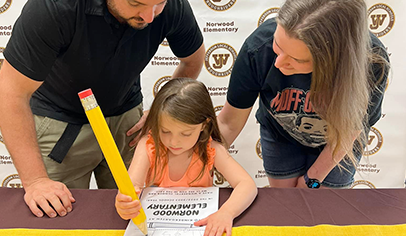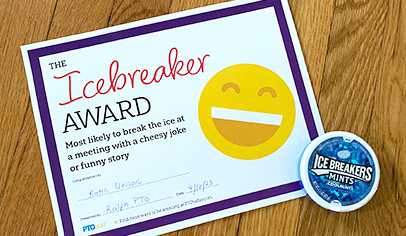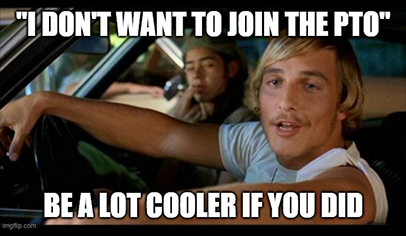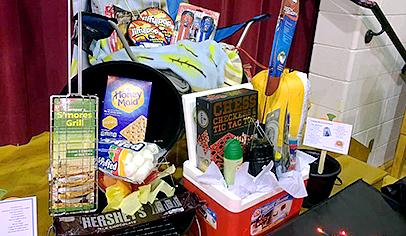Your recruitment campaign was wildly, or even mildly, successful. Congratulations. Now what? How will your veteran members accept your novice members and their new ideas? And how will you get and keep new folks involved without overwhelming them?
From the very beginning, you set the tone. Make sure that your group and several key members are prepared to make the atmosphere welcoming and inclusive. Have volunteers ready to greet newcomers cheerfully at the door. Conveying the message that the group is glad they are there makes interaction positive from the start.
An important step for including new members is to offer a variety of avenues for meaningful contributions to the group. If you have set major projects for the year, provide an overview that details timelines, the tasks to be accomplished, and a rough idea of the time involved. This helps people find a niche that matches their interests and time available. If yours is a long-established group with traditions or projects, remember that you may need to explain what “everyone knows.”
Including some flexibility in your programs or projects allows for input from new members. Brainstorming ideas for teacher recognition week, for example, allows for input from everyone. Open participation often provides clues for you as the leader about what interests your members and how you might best use their particular ideas. You may also learn something about people’s styles of working together in this kind of forum. Be sure to remind people about the rules for brainstorming before you begin: Any idea is fine — no censoring or discussion of merits yet. This is brainstorming!
There are also usually short-term tasks, such as helping with refreshments for meetings or coming a little early to make the coffee, that offer people a gradual way to learn about the group and own a part in it. Sign-up sheets for project committees or specific short-term tasks provide a nonthreatening way for people to state their preferences.
You might also divide the group into project committees immediately following your overview for a short first meeting. This is another way to help folks meet people with a similar interest and for you to gain specific commitment for projects right away. If your group is new or hasn’t moved very far ahead with its planning, you might want to simply brainstorm or outline tasks to be done, such as working out meeting logistics, planning monthly programs, or coming up with a list of possible projects. Regardless of where you are in your planning process, involving new members from the beginning will have its own rewards in productivity and teamwork.
Another idea to make new members feel valued is to create a buddy system for personal follow-up. You might ask a particular older member who lives near a new member or who has children at the same grade level to take on this responsibility. The responsibilities of a buddy include contacting a new member between meetings to follow up on any questions the person might have. A friendly email with a reminder of the next meeting is appropriate, as is an offer of a ride to the next meeting, if the buddies live near each other. This method creates a direct connection between your older and newer members. If older members are mentoring newer members in this way, inclusion becomes almost a given.
Getting to know each other on many levels is also crucial to forming a cohesive group. An idea that works for many groups involves using name tags as a way to get to know more than just someone’s name. Even though most of your members may already be acquainted, using name tags puts everyone on equal footing, and often people who have known each other before still learn something new.
You’ll need to use the largest name tags you can find. As people arrive, ask them to fill out a tag. Their first name should go in large, printed letters in the middle. In each corner, ask them to write a fact about themselves. For example, in the upper right corner you might ask them to put the grade level of their child or children. In the other corners, direct them to note their favorite food, a hobby, a favorite book or movie, even a favorite color. To make the directions more clear, have a sample name tag with the facts you are requesting prepared and displayed on poster board or newsprint at the registration table.
After your official opening and greeting, ask people to mingle, directing them to find those people in the room whose answers on a specific corner match their own. As you direct the rotation through the corners, spend only a few minutes for each category. The point is for members to meet as many people as they can, discovering things they have in common.
Get-acquainted and group-building exercises are a great way to begin integrating new members. Asking your group to learn each other’s names and to get to know each other builds their spirit and pride as a group. If you have a fairly large number of new members, include this type of exercise as part of the agenda at every meeting for a while.
As a variation, ask people to pair with someone they don’t know well and take five minutes to get acquainted. Participants then take turns introducing their partners to the group. This can be time-consuming but works well as long as your group is fairly small.
For a quicker mixer for a larger group, have people arrange themselves in smaller clusters of three, four, or five, or split the group evenly by asking them to draw colored slips of paper. The task is to generate a list of things that are common to all the people in the group but not obvious by just looking at them, such as wearing glasses or having brown hair. Examples of unseen commonalities might include a hobby, a movie everyone has seen, travel outside the United States or to a specific state or city, a favorite food, or a middle name starting with the same letter.
The object is to find as many points in common as they can in two or three minutes. A spokesperson can then introduce the members of her group and reveal what they have in common. The number of commonalities people find in just a few minutes can be amazing.
























